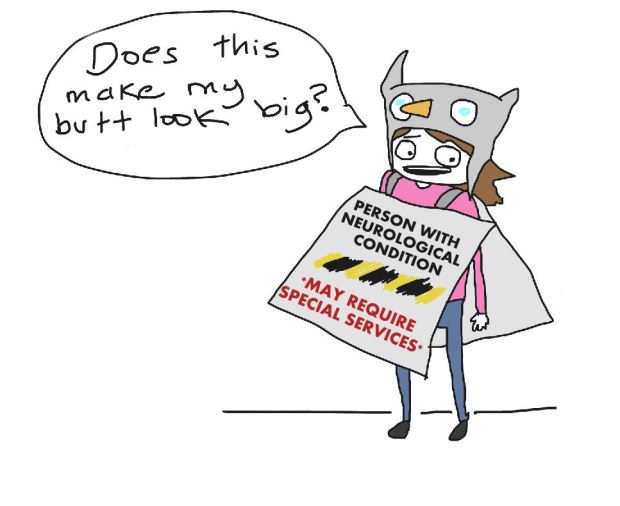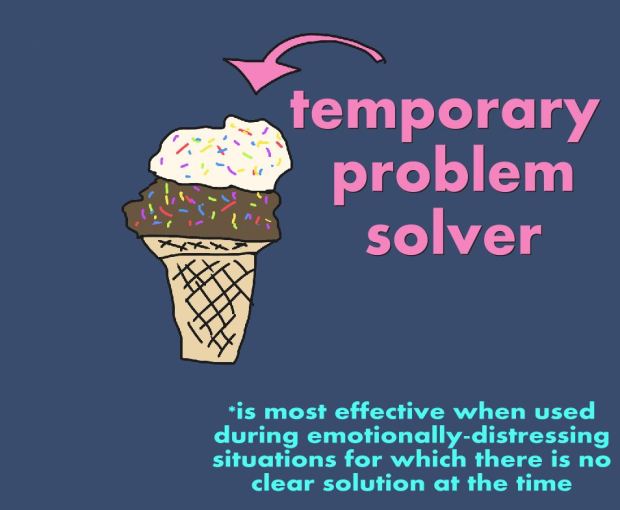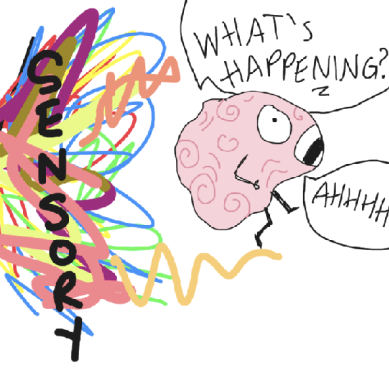Picture this: you are out and about in this great, big world – away from the comfort and security of your own bathroom. Suddenly, it hits you.
You gotta go.
Perhaps it was those two three cups of tea you had this morning. Maybe you ate a sandwich and afterwards, you remembered sandwiches give you tummy troubles. How unfortunate! Whatever the case may be, you know now that your destination is only one place: the public restroom.
Depending on where exactly you are, your public restroom experience will be either “pretty bad,” “extremely bad” or,”oh lord have mercy on me.”
If you’re like me, most public restroom experiences fall into the “oh lord have mercy on me” category. This is because not only do public restrooms suck all faith in humanity from my soul, but they are also SENSORY-DANGEROUS SPACES. What constitutes a SENSORY-DANGEROUS SPACE, you ask?
Luckily for you, I’ve spent my whole life figuring out the best way to deal with public restrooms as someone with Sensory Processing Disorder. I will now bestow upon you, dear friends, the skills and swift tricks I have mastered to survive these dreaded moments.
1. Know your options
Before heading to your death in a public restroom, stop and think. Do I know of a nearby restroom which offers a BETTER sensory experience? Can I make it there in time? If yes, go there. Always know your options before making a commitment.
Within my first week of college, I made myself into a restroom expert of sorts. In my mind I created a mental map of the entire campus and all its restrooms. Each one had a rating scale of how sensory-dangerous it was. I carefully calculated the time it would take me to run from one class, across campus to use the least sensory-dangerous restroom, and back to my next class without being late. (It’s actually really sad that I had to run through this anxiety-producing drill every day at school, but beggars can’t be choosers….or something like that.)
2. Use your tools
If you’re like me, you keep an arsenal of sensory tools with you at all times. For my particular sensory needs, this includes: ear plugs, bigger ear plugs, noise-cancelling headphones, sunglasses, and a Wilbarger brush.
Much like preparing for battle, one must gear up before heading to a public restroom. There is no shame in this!
3. Go during safe times
If it can be avoided, use the public restroom at times when you will likely be the only one in there. Just one other person can reak havoc upon your restroom experience. Tread carefully!
If it is impossible for you to use the restroom during slower times, then option three is a total waste of time. I’m sorry I even created this option.
4. All about technique
So you find yourself in the restroom with multiple people doing multiple things. I’m talking about hand dryers, hand washing, toilets flushing, doors slamming, kids screaming, people talking loudly on their phones (which by the way, has me all “WTF talk somewhere else”), and many more!
Your tools can only go so far. It’s not about the tools you have, rather, it’s how you use them. It’s time to explore the Techniques for Public Restroom Sensory Safety and Survival, or as I call it: TPRSSS, (pronounced “te-purrs”).
Technique 1: Wash ‘n Go
After you’ve done the business, it’s time to rid yourself of those pesky germs. But wait! Oh no! The restroom is crowded with people using those hand dryers that sound like commercial airliners taking off. For this technique, wash your hands and RUN. Dry on your own time – those hand dryers will wait for no one.
Technique 2: Be aware of your neighbors.
Are your fellow restroomers about to flush and unleash a windstorm of sudden, loud toilet sounds? Be prepared and mindful of your neighbors. Don’t let an unexpected flush or door slam set you off into panic mode.
Technique 3: The Cold Shoulder
In a moment of haste, you may have forgotten to wear hearing protection before entering the restroom. Fear not! In this situation, cover your ears and use your shoulder to take the place of one hand when that hand is in use. Observe the following diagram:
Technique 4: Run, Forest, Run
Move quickly. You are a cheetah in the fast-lane. Slow and steady will not win the race for you when you’ve got sensory issues in the restroom.
Technique 5: Mental Stamina
Here’s the situation: you gotta go, but the restroom is crowded and way too overstimulating for you right now. But you’ve been here before. It’s time for you to use your mental powers to convince yourself that you really don’t have to go at all. Need to pee? Not anymore. Why? YOUR MIND TOLD YOU SO. This technique requires time and patience, but once mastered, it may be your saving grace in a desperate situation.
In conclusion, restrooms are a sensory nightmare. But, with the right techniques, you CAN survive the experience.
As I lay awake at night, pondering the insanity that is life, I imagine a world where people with Sensory Processing Disorder can use public restrooms with ease. I dream of quieter toilets, and paper towels for hand drying, maybe even less fluorescent lighting! Let us end the reign of restroom misery!
One day I will enter a public restroom less like this:
And more like THIS:
xo kelly
Got any other sensory-related restroom advice? Let me know in the comments!
























